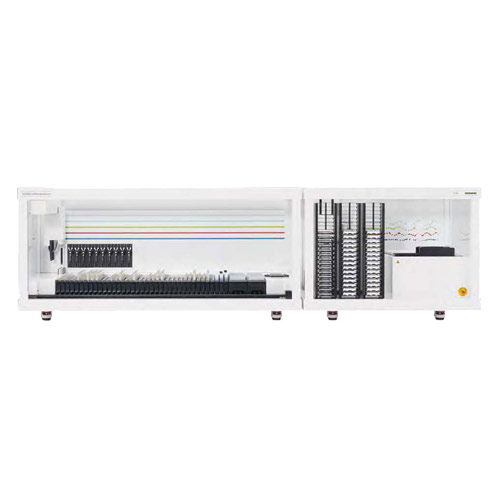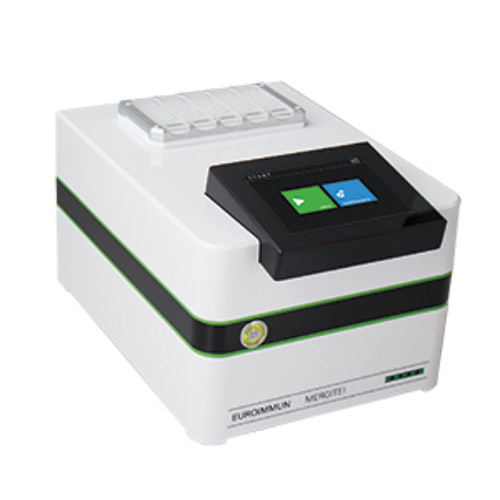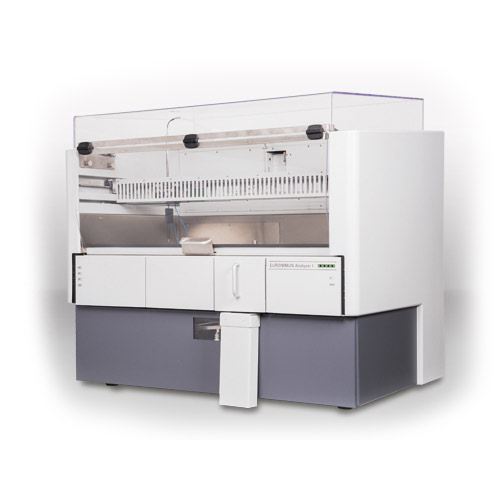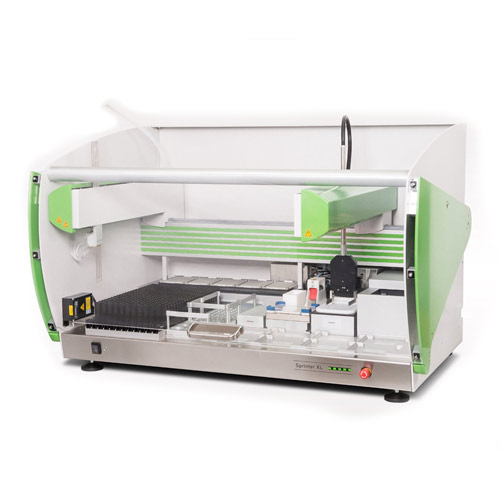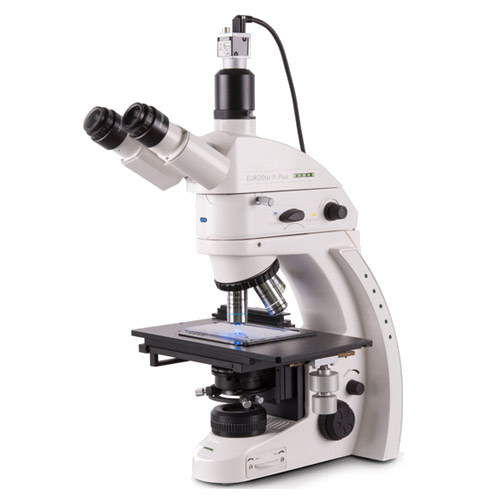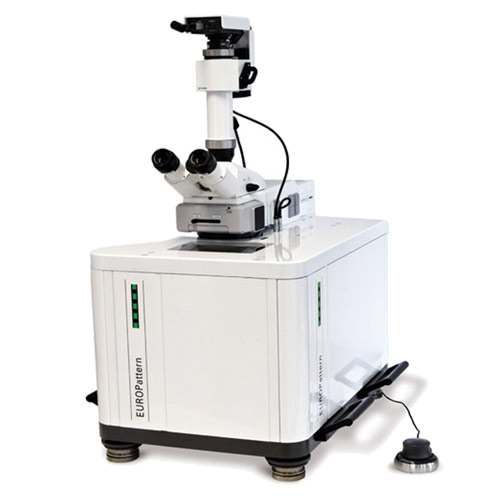In the first incubation step, specific antibodies from the diluted sample bind to the solid-phase bound antigens. In the next step, a fluorescein (FITC)-labelled antibody (conjugate) binds to the specific antibodies from the sample. By excitation with the respective wavelength, the complex can be made visible at the fluorescence microscope. The test processing may be manual, semi- or completely automated.
BIOCHIP technology
The BIOCHIP technology developed by EUROIMMUN allows unrivalled quality and variety in IIFT. Due to a special activation technique, cover glasses are modified in such way that very different substrates can be coated with the strongest adhesion. Cultured cells, tissue sections, antigen-expressing cells and purified antigens (antigen dots) are used as substrates. The cover glasses coated with biological substrates are cut mechanically into millimeter-sized fragments (BIOCHIPs). Many preparations with consistent, high quality can be obtained per tissue section, for cultured cell substrates even several thousands. The BIOCHIPs are fixed precisely on the test fields of specially developed plastic slides. When multiple BIOCHIPs coated with different substrates are arranged in one reaction field, antibodies against various organs or infectious agents can be investigated simultaneously. Such BIOCHIP mosaics allow the generation of comprehensive antibody profiles (multiplex) with minimal sample volumes or the reciprocal verification of the results on different substrates.
 TITERPLANE technology
TITERPLANE technology
BIOCHIP technology not only ensures the highest standardization of substrate production but also, together with TITERPLANE technology, provides a unique form of incubation for brilliant fluorescence images.
In the TITERPLANE technique, the diluted samples are first pipetted onto the fields of a glass reagent tray. The fields of the reagent tray are hydrophilic while the area outside the fields is hydrophobic, so that the samples cannot run into each other. Only when all the samples have been pipetted are the slides placed onto the reagent trays, with the BIOCHIPs facing downwards. In this way, all reaction fields come into contact with the samples at the same time and the reactions are started simultaneously for all samples. This prevents deviations in the reaction intensity due to differences in the incubation times.
Another advantage of TITERPLANE technology and of placing the slides onto the samples from above results from gravity: crystals or particles in the samples do not accumulate on the BIOCHIPS, but on the reagent tray. Moreover, TITERPLANE technology prevents evaporation of the samples, rendering a conventional “humidity chamber” unnecessary. This results in optimal fluorescence images which may be evaluated manually or fully automatically.
